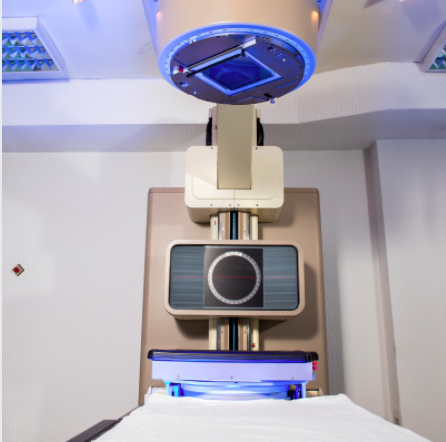Your first question is probably simple – What is image-guided radiation therapy, or IGRT? Simply put, IGRT is a type of cancer treatment that helps doctors pinpoint tumors using visual imaging and then destroy them with a high-energy X-ray. Combining these technologies lets the medical team locate the tumor, get detailed images of tumors and surrounding tissue, and deliver the radiation more precisely so there is less damage to surrounding tissue and the radiation reaches the tumor more accurately and completely. Patients undergo a simulation before surgery during which the areas of the body to be dosed are carefully mapped out.
Advantages of IGRT When Treating Cancer
Image-guided radiation therapy offers several advantages when treating cancer:
- Doctors get a better view of the tumor’s size, shape, and location, as well as a better view of the surrounding tissues
- Radiation dosages can be delivered with more accuracy
- Surrounding tissue is less likely to be damaged by the radiation
- IGRT makes treatment cases where cancerous tumors are located near sensitive organs or tissues
- Cancer treatment is more effective because higher doses of radiation can be used in the specific regions
- IGRT even enables better tracking of tumors that move due to function of the organ or tissue structure including cancers of the prostate, pancreas, lungs, and liver
What Does IGRT Treatment Look Like for the Patient?
An image-guided radiation procedure typically includes a simulation, the treatment(s), and follow-up visits during and after radiation therapy.
Simulation
This is the first step that allows the medical team to prepare for the actual procedure at a later date. It helps them pinpoint the exact location for delivering the radiation dose to ensure the most effective treatment.
What to Expect: On the day of your appointment, you will change into a hospital gown and go to a room with a table and medical-imaging equipment. The team may use X-rays, CT scans and other imaging machines to locate the tumors and determine the best approaches for dosing. Your body may be positioned using customized cushions, molds, or devices, to obtain the best possible views for the scanners. Your body will be marked to indicate the target points for the radiation treatment. When the simulation is completed, you will schedule your first radiation treatment.
Radiation Treatment
The good news is that the actual treatment is similar to the simulation but takes less time because your medical team will already have a plan in place. Depending on the type and extent of your cancer, you may be required to return for additional treatments. One of the major advantages of IGRT is that it is more effective so these trips are kept to a minimum because the tumor is precisely targeted and receives the maximally effective doses of radiation.
What to Expect: A member of your medical team will position you properly based on the simulation findings.The procedure is painless and usually only takes a few minutes. Your radiologist will use the imaging equipment to fine-tune delivery of the radiation based on any changes in the location of the tumor. You will be monitored throughout the dosing period.
Follow-up
Both during and after radiation therapy, you will have regularly scheduled follow-up appointments. These visits will allow you to ask questions, ensure that the treatments are effective, and address any side effects that you may experience from radiation.
Possible Side Effects
Radiation treatment can result in both short- and long-term side effects.
Short-term side effects – these may begin during treatment and may increase throughout the course of treatment, but they usually improve in the few weeks following completion of treatment. They include:
- Irritated, itchy, or swollen skin
- Weakness/fatigue
- Hair loss in the treated area
- Depending on what part of the body is being treated, additional side effects will vary (common side effects of prostate/pelvic radiation include bowel and urinary irritation, cramping, diarrhea, frequent urination, slower urination, discomfort when urinating).
Long-term side effects – these are less common but more serious. They can show up months or sometimes years after treatment. As expected, they vary, depending on what part of the body was treated. Modern technology and precision have greatly reduced these risks. Potential long-term effects of prostate/pelvic radiation can include:
- Damage to bowel or bladder
- Lymphedema
- Infertility
- Erectile dysfunction
- Secondary cancers
Radiation therapy can also lead to changes in the size, shape, or function of targeted organs or structures.
At KCUC, we specialize in providing supportive care — knowledgeable, accurate, friendly and courteous. We offer state-of-the-art treatments in a modern facility, so you can get in and out quickly, but in a setting, that’s relaxing and less stressful than a hospital. We also have some of the top Kansas City urologists and oncologists to help support you with multiple locations in Kansas and Missouri.

